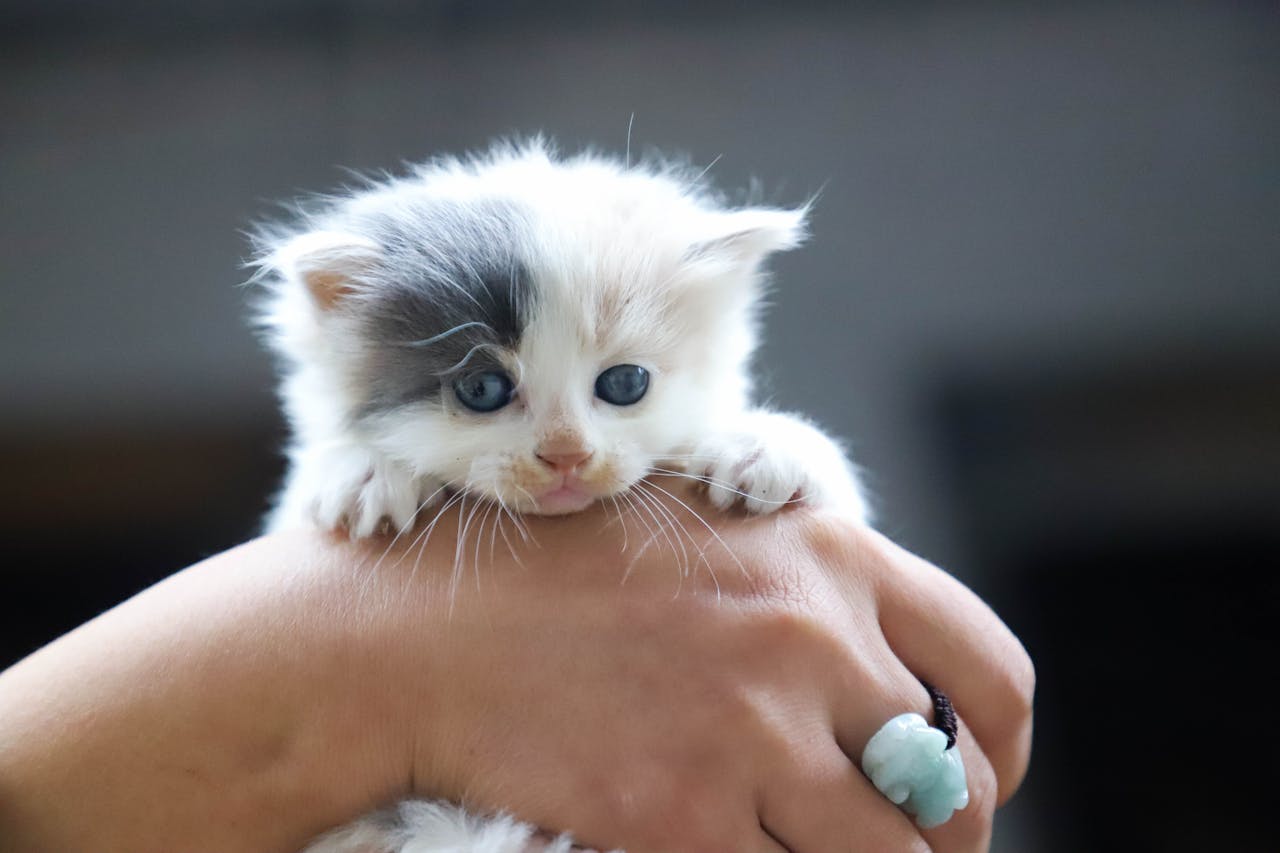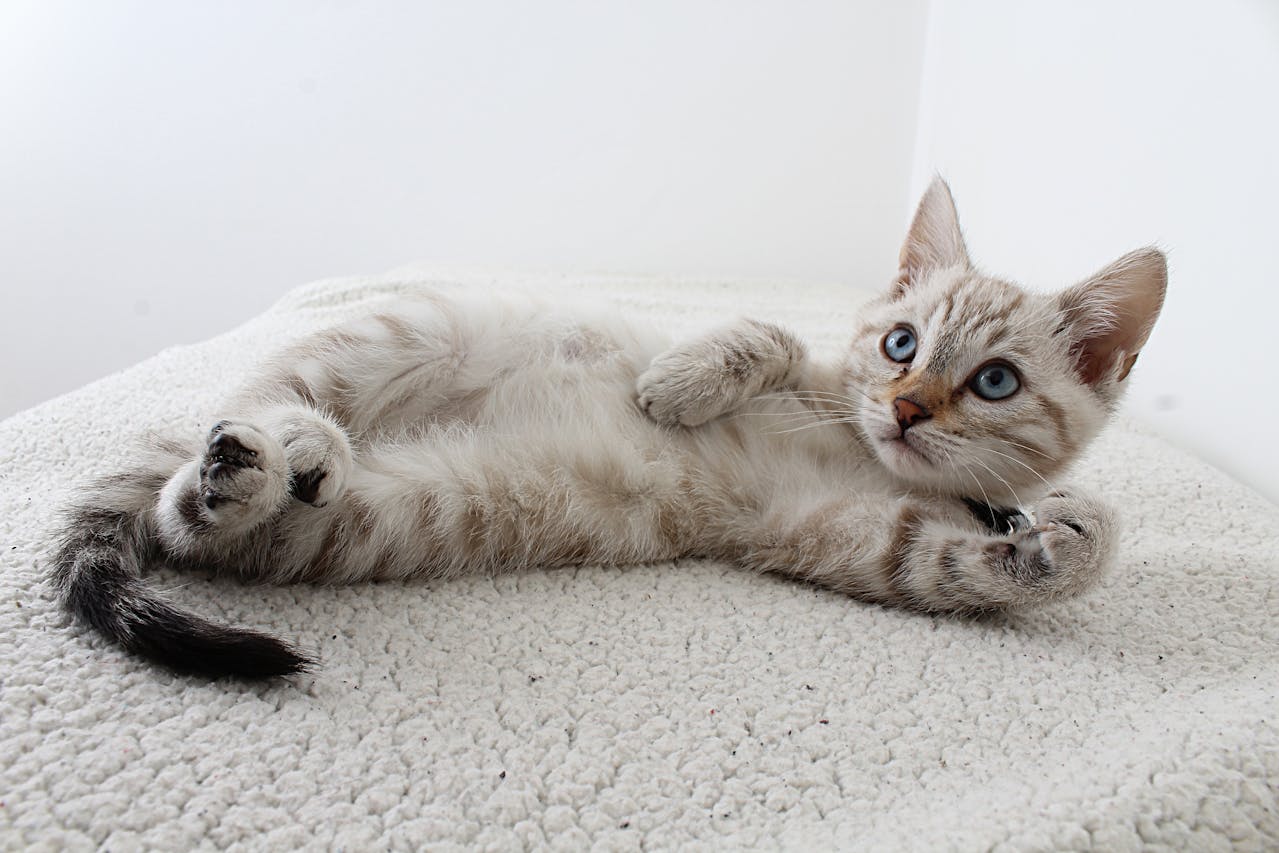The Real Connection Between Cats and Schizophrenia Unveiled by Recent Study
The Real Connection Between Cats and Schizophrenia Unveiled by Recent Study, Study Confirms Existence of Enigmatic Connection Between Cats and…
The Real Connection Between Cats and Schizophrenia Unveiled by Recent Study, Study Confirms Existence of Enigmatic Connection Between Cats and Schizophrenia.
Recent research suggests a potential doubling of schizophrenia-related disorder risk in individuals who own cats, prompting a deeper examination into this perplexing association.
Investigating the Cat-Schizophrenia Link: Unraveling the Findings

The Study: Australian researchers, led by psychiatrist John McGrath from the Queensland Centre for Mental Health Research, scrutinized 17 studies spanning 44 years and 11 countries. Their analysis, published in December, underscored a noteworthy correlation between cat ownership and heightened odds of developing schizophrenia-related disorders.
The Hypothesis: The hypothesis proposing a tie between cat ownership and schizophrenia dates back to a 1995 study, implicating exposure to the Toxoplasma gondii parasite as a potential catalyst. However, previous investigations have yielded inconclusive results.
Understanding Toxoplasma gondii: T. gondii, a largely benign parasite, can be transmitted through undercooked meat, contaminated water, or contact with infected cats. Despite often presenting without symptoms, an estimated 40 million people in the US may harbor the parasite, with emerging research suggesting diverse effects, including personality alterations and neurological disorders.
The Analysis: The comprehensive review identified a significant positive association between cat ownership and an elevated risk of schizophrenia-related disorders. Adjusting for confounding variables, individuals exposed to cats exhibited approximately double the odds of developing schizophrenia.
Study Limitations: While shedding light on this intriguing correlation, the study faced limitations, such as the predominance of case-control designs, which hinder conclusive cause-and-effect determinations. Additionally, the variable quality of the studies underscored the need for more robust, large-scale investigations.
Inconsistencies Across Studies: Findings across studies varied, with some failing to establish a clear link between cat ownership and schizophrenia-related traits. Discordant results underscored the complexity of pinpointing the critical timeframe for cat exposure and suggested potential alternate pathways, such as other pathogens like Pasteurella multocida.
Conclusion and Future Research: Despite the observed association, the authors advocate for further high-quality studies, emphasizing the necessity of representative samples to comprehensively evaluate cat ownership as a potential risk-modifying factor for mental disorders.
Publication Details: The study, originally published in Schizophrenia Bulletin, highlights the ongoing need for rigorous investigation into the enigmatic relationship between cats and schizophrenia-related disorders.
Note: An earlier version of this article was published in December 2023.
Related: Revealing Bacterial Vampirism: Deadly Bacteria’s Thirst for Human Blood Join TELEGRAM
Unraveling the Cat-Schizophrenia Conundrum: FAQs Answered

Q: Is there a real link between owning a cat and schizophrenia-related disorders?
A: Recent research suggests a potential association between cat ownership and an increased risk of schizophrenia-related disorders, according to a study conducted by Australian researchers.
Q: What did the study involve?
A: The study involved an analysis of 17 research studies spanning 44 years and 11 countries, examining the correlation between cat ownership and schizophrenia-related disorders.
Q: What did the researchers find?
A: The researchers found a significant positive association between cat ownership and an elevated risk of developing schizophrenia-related disorders.
Q: What hypothesis was proposed regarding this connection?
A: The hypothesis suggesting a link between cat ownership and schizophrenia was first proposed in a 1995 study, implicating exposure to the Toxoplasma gondii parasite as a potential cause.
Q: How is Toxoplasma gondii transmitted?
A: Toxoplasma gondii can be transmitted through undercooked meat, contaminated water, or contact with infected cats, although it often presents without symptoms.
Q: Are there any limitations to the study?
A: Yes, the study faced limitations such as the predominance of case-control designs and variable study quality, highlighting the need for further robust investigations.
Q: What inconsistencies were observed across studies?
A: Findings across studies varied, with some failing to establish a clear link between cat ownership and schizophrenia-related traits, underscoring the complexity of the relationship.
Q: What do the researchers suggest for future research?
A: The researchers advocate for further high-quality studies using representative samples to comprehensively evaluate the role of cat ownership as a potential risk factor for mental disorders.
Q: Where was the study published?
A: The study was published in Schizophrenia Bulletin, emphasizing the ongoing need for rigorous investigation into the relationship between cats and schizophrenia-related disorders.
Understanding the Life and Behavior of Cats

The Life of Cats
Cats, known for their enigmatic personalities and graceful movements, have captivated humans for centuries. Understanding their life cycle and behavior sheds light on their unique nature.
1. Kittenhood (0-6 Months):
- Development: Kittens are born blind and deaf, relying on their sense of touch and smell to navigate their surroundings.
- Growth: Rapid growth occurs during this stage, with kittens doubling or tripling their birth weight within the first few weeks.
- Behavior: Playfulness and curiosity characterize kittenhood, as they explore their environment and develop social skills through interaction with littermates and humans.
2. Adolescence (6-18 Months):
- Independence: Adolescence marks the transition from dependence on the mother to independence.
- Exploration: Young cats continue to explore their environment, refining hunting skills through play and experimentation.
- Socialization: Adolescents establish social hierarchies within multi-cat households and develop territorial behaviors.
3. Adulthood (1-10 Years):
- Prime Years: Adult cats reach their prime during this stage, exhibiting stability in behavior and health.
- Reproduction: If not neutered or spayed, cats may engage in mating behaviors and reproduce during this period.
- Established Behavior: Cats display distinct personality traits, forming strong bonds with their owners and demonstrating territorial instincts.
4. Senior Years (10+ Years):
- Aging Process: Senior cats experience physical and cognitive changes, including decreased mobility, vision, and hearing.
- Health Concerns: Common age-related ailments such as arthritis and dental issues may arise, requiring specialized care.
- Behavioral Changes: Senior cats may become more sedentary and exhibit changes in appetite and sleep patterns.
Understanding Cat Behavior
1. Social Behavior:
- Territoriality: Cats are territorial animals, marking their territory with scent glands located on their face, paws, and tail.
- Communication: Vocalizations, body language, and scent marking are key forms of communication among cats.
- Hierarchy: In multi-cat households, social hierarchies are established through dominance displays and territorial behaviors.
2. Hunting and Play Behavior:
- Hunting Instinct: Cats retain their instinctual drive to hunt, engaging in play behaviors that mimic hunting.
- Play as Enrichment: Play serves as physical and mental stimulation, promoting exercise and preventing boredom.
3. Sleeping Patterns:
- Nocturnal Nature: Cats are crepuscular, meaning they are most active during dawn and dusk.
- Sleeping Habits: Cats spend a significant portion of their day sleeping, often alternating between short naps and longer periods of rest.
4. Grooming Behavior:
- Self-Grooming: Cats are meticulous groomers, using their rough tongues to remove dirt and loose fur from their coat.
- Bonding Behavior: Mutual grooming between cats or between a cat and its owner strengthens social bonds and promotes relaxation.
Understanding the life stages and behaviors of cats enhances our appreciation for these fascinating creatures, fostering deeper connections and enriching their quality of life.
Exploring Common Questions About Cats

Q: How long do cats live on average?
A: The lifespan of a cat varies depending on factors such as genetics, diet, and environment. On average, indoor cats live between 12 to 20 years, while outdoor cats have a shorter lifespan of around 2 to 5 years due to various risks and hazards.
Q: What are the signs of a healthy cat?
A: Signs of a healthy cat include bright eyes, a shiny coat, regular grooming habits, normal appetite and water intake, regular bowel movements, and playful behavior. Regular veterinary check-ups are essential for maintaining your cat’s health.
Q: How can I prevent my cat from scratching furniture?
A: To prevent your cat from scratching furniture, provide alternative scratching surfaces such as scratching posts or pads. Use deterrents like double-sided tape or citrus sprays on furniture, and trim your cat’s nails regularly to minimize damage.
Q: Is it normal for cats to vomit hairballs frequently?
A: Occasional hairball vomiting is normal for cats, especially those with long hair. However, frequent or persistent vomiting may indicate an underlying health issue, and it’s important to consult a veterinarian if you’re concerned.
Q: How can I introduce a new cat to my existing pets?
A: Introduce new cats to existing pets gradually, starting with scent swapping and visual introductions before allowing direct interaction. Provide separate resources such as food bowls, litter boxes, and resting areas to prevent territorial conflicts.
Q: Why do cats knead with their paws?
A: Kneading, also known as “making biscuits,” is a natural behavior in cats that begins during kittenhood. It’s often associated with contentment and relaxation, as well as the instinctual behavior of kneading to stimulate milk flow while nursing.
Q: How can I help my cat adjust to a new home?
A: To help your cat adjust to a new home, provide a quiet and safe space initially, gradually introducing them to different areas of the house. Maintain a consistent routine, offer familiar items like bedding or toys, and give plenty of attention and reassurance.
Q: Is it necessary to spay or neuter my cat?
A: Spaying (for females) and neutering (for males) not only prevent unwanted litters but also provide health benefits and help reduce certain behavioral issues such as roaming, spraying, and aggression. It’s generally recommended to spay or neuter cats unless they are intended for breeding purposes.
Q: How often should I groom my cat?
A: The frequency of grooming depends on your cat’s breed, coat length, and grooming habits. Generally, cats with long or thick coats may require daily brushing to prevent matting and reduce shedding, while short-haired cats may need less frequent grooming.
Q: Why do cats sometimes urinate outside the litter box?
A: Cats may urinate outside the litter box due to various reasons, including medical issues, stress or anxiety, territorial marking, or dissatisfaction with the litter box cleanliness or location. Identifying and addressing the underlying cause is essential for resolving this behavior.
